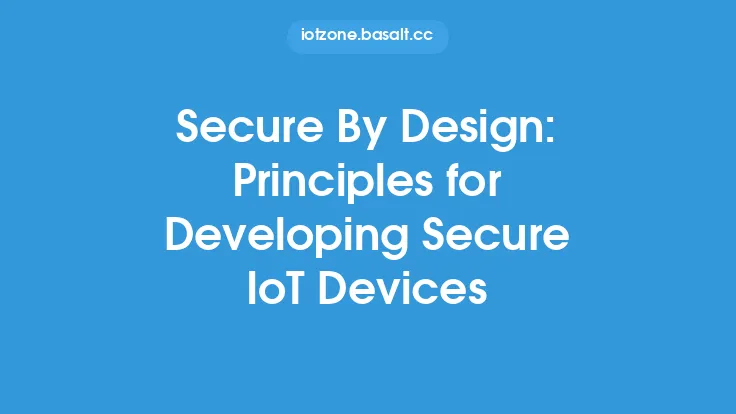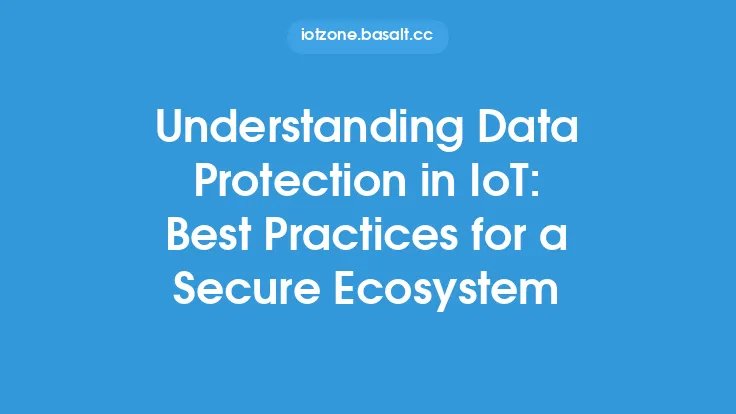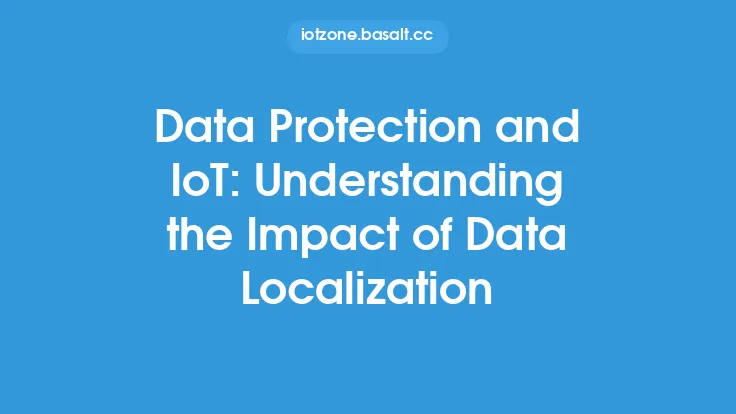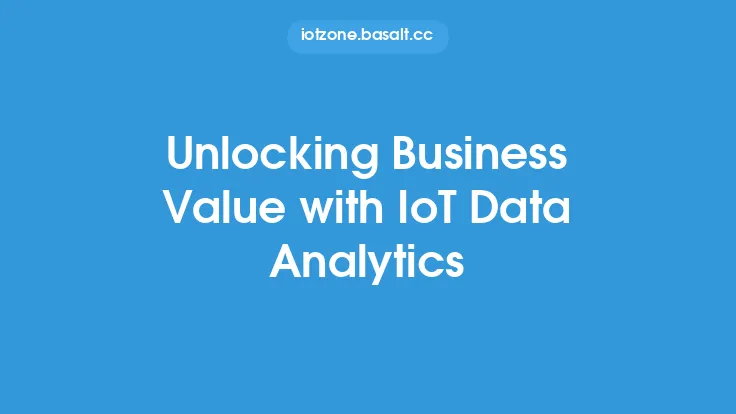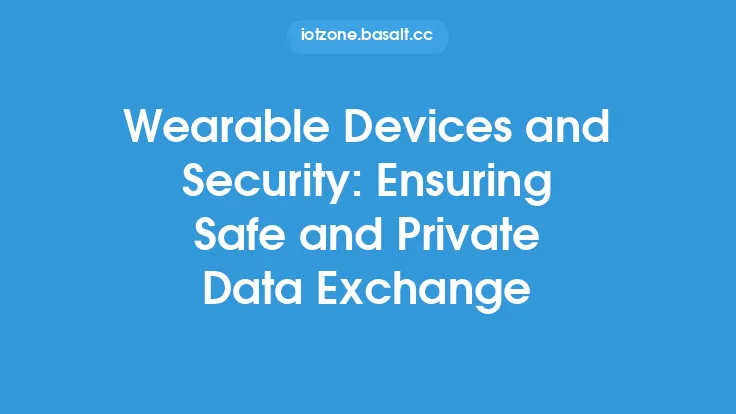The Internet of Things (IoT) has revolutionized the way we live and work, with an estimated 22 billion connected devices worldwide. However, this increased connectivity has also introduced significant security risks, particularly when it comes to data protection. As IoT devices become more pervasive, it is essential to prioritize data protection by design, building security into these products from the outset. This approach ensures that IoT devices are designed with security in mind, minimizing the risk of data breaches and cyber attacks.
Introduction to Data Protection by Design
Data protection by design is a concept that involves integrating security and data protection principles into the design and development of IoT products. This approach requires manufacturers to consider the potential risks and threats associated with their devices and implement measures to mitigate them. By building security into IoT products from the start, manufacturers can reduce the risk of data breaches, protect user data, and maintain trust in their products. Data protection by design is not a new concept, but it has become increasingly important in the context of IoT, where devices are often connected to the internet and can collect and transmit sensitive data.
Principles of Data Protection by Design
There are several key principles that underpin data protection by design in IoT products. These include:
- Minimize data collection: IoT devices should only collect data that is necessary for their intended purpose. This reduces the risk of data breaches and minimizes the amount of sensitive data that is stored or transmitted.
- Use secure communication protocols: IoT devices should use secure communication protocols, such as encryption, to protect data in transit.
- Implement access controls: IoT devices should have robust access controls, including secure authentication and authorization mechanisms, to prevent unauthorized access to data.
- Use secure data storage: IoT devices should use secure data storage mechanisms, such as encryption, to protect data at rest.
- Regularly update and patch software: IoT devices should have software that is regularly updated and patched to fix security vulnerabilities and prevent exploitation by attackers.
Technical Implementation of Data Protection by Design
Implementing data protection by design in IoT products requires a range of technical measures. These include:
- Encryption: Encryption is a critical component of data protection by design. IoT devices should use encryption to protect data in transit and at rest. This can include symmetric encryption, such as AES, and asymmetric encryption, such as RSA.
- Secure boot mechanisms: Secure boot mechanisms ensure that IoT devices boot up with authorized software and firmware. This prevents attackers from installing malicious software or firmware on the device.
- Trusted execution environments: Trusted execution environments (TEEs) provide a secure environment for executing sensitive code and storing sensitive data. TEEs use hardware-based security mechanisms, such as secure enclaves, to protect data and code from unauthorized access.
- Secure communication protocols: Secure communication protocols, such as TLS and DTLS, provide end-to-end encryption and authentication for data in transit.
Benefits of Data Protection by Design
Data protection by design offers a range of benefits for IoT manufacturers and users. These include:
- Improved security: Data protection by design helps to prevent data breaches and cyber attacks by building security into IoT products from the outset.
- Increased trust: By prioritizing data protection, IoT manufacturers can increase trust in their products and build strong relationships with their customers.
- Regulatory compliance: Data protection by design can help IoT manufacturers comply with regulatory requirements, such as the General Data Protection Regulation (GDPR) and the California Consumer Privacy Act (CCPA).
- Reduced risk: Data protection by design can help reduce the risk of data breaches and cyber attacks, which can have significant financial and reputational consequences for IoT manufacturers.
Challenges and Limitations of Data Protection by Design
While data protection by design offers a range of benefits, there are also several challenges and limitations to consider. These include:
- Complexity: Implementing data protection by design can be complex and require significant resources and expertise.
- Cost: Building security into IoT products can increase development costs and time-to-market.
- Legacy devices: Many existing IoT devices may not have been designed with security in mind, making it challenging to implement data protection by design retroactively.
- Evolving threats: The threat landscape is constantly evolving, and IoT manufacturers must stay up-to-date with the latest threats and vulnerabilities to ensure the effectiveness of their data protection by design measures.
Best Practices for Implementing Data Protection by Design
To implement data protection by design effectively, IoT manufacturers should follow several best practices. These include:
- Conduct thorough risk assessments: IoT manufacturers should conduct thorough risk assessments to identify potential security risks and threats associated with their devices.
- Implement secure by design principles: IoT manufacturers should implement secure by design principles, such as minimizing data collection and using secure communication protocols.
- Use secure development lifecycle practices: IoT manufacturers should use secure development lifecycle practices, such as secure coding and testing, to ensure that their devices are designed and developed with security in mind.
- Regularly update and patch software: IoT manufacturers should regularly update and patch software to fix security vulnerabilities and prevent exploitation by attackers.
Conclusion
Data protection by design is a critical component of IoT security, and manufacturers must prioritize it to protect user data and maintain trust in their products. By building security into IoT products from the outset, manufacturers can reduce the risk of data breaches and cyber attacks, and ensure compliance with regulatory requirements. While there are challenges and limitations to implementing data protection by design, the benefits are significant, and IoT manufacturers should follow best practices to ensure the effectiveness of their measures. As the IoT continues to evolve and grow, data protection by design will become increasingly important, and manufacturers must stay ahead of the curve to protect their customers and their reputation.
